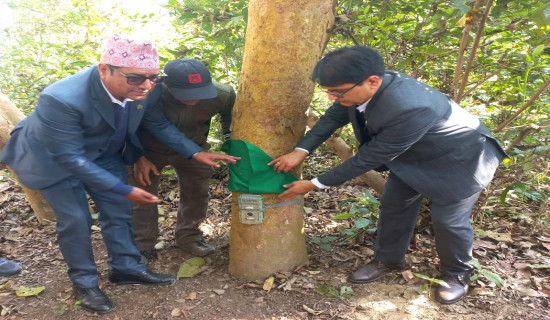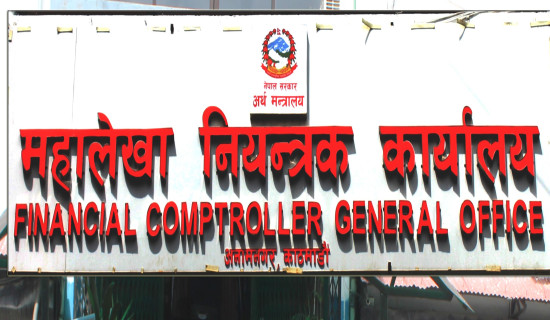- Tuesday, 16 December 2025
58thAnniversary Special Supplement
Women Journalists Still Fighting To Shatter Stereotypes
In Nepal, only 25 per cent of the working journalists are women, and like many countries, the majority of high-profile journalists and editors in Nepal are male, and women journalists are still striving to make their mark in an industry dominated by men. Though there has been significant improvement in the prospects for women working in the media over the past decades, the number of female journalists in editorial and policy-making positions is very low. Female journalists have embarked on an extensive journey; they have challenged stereotypes and transformed the realm of journalism. After vehemently confronting biases, scepticism, and disapproval regarding their professional capabilities, few women journalists have reached editorial positions. Their persistent efforts have opened doors for aspiring women journalists, empowering them to succeed in this field. According to Sanchirika Samuha, out of 1,143 women journalists surveyed in 2022, only 8.1 per cent of women work as editors, but those numbers are generally representative of the media houses that are owned by themselves or their families. It depicts that the actual representation of women in editorial and policy-making positions is very low.
Bimala Tumkhewa, the President of Sancharika Samuha, said, “Of all the journalists, only 25 per cent are female, and it has hugely impacted the coverage and representation of women’s issues. Women’s issues are inadequately represented. The sensitivity and sincerity needed while reporting and representing women’s issues are often lacking, as the number of female reporters is low. When there are fewer female reporters, there could be an underrepresentation of women’s issues; their issues are not prioritised, and those issues are less followed up. Thus, fostering an understanding of how gender biases can influence news coverage is a must.”
Suzzane Frank, in her book Women and Journalism, says, “Women substantially outnumber men in journalism training and enter the profession in a slightly greater number, but still relatively few are rising to senior jobs, and the pay gap between male and female journalists remains a stubbornly wide one.” The same is true in the case of Nepal as well.
Women who excelled in academics join journalism full of aspirations. Those promising female journalists, after a few years, start reevaluating their decisions as the pay is very low. There is the risk of layoffs at any time in private media houses, as we have frequently seen even big and established media houses downsize their staffs time and again. So, many promising female journalists opt for careers in government and non-government organisations, considering job security and professional growth.
“There are still enduring stereotypes; women predominate on lifestyle pages but do not feature much in crime or sports. They are also far more likely to be seen on the front pages,” said Frank in her book Women and Journalism. Women hardly get to report on influential beats like politics and crime. To date, though, in more subtle language, it has been expressed that women are not competent enough to handle these beats.
It is the same as assuming that women can’t excel in mathematics and engineering, though women have excelled in these subjects. Ambitious and capable women journalists often get confined to lifestyle and entertainment and get fewer platforms to showcase their talent and capabilities as they are not given enough opportunities to cover more critical issues like politics and economics. Had there been more women journalists at the editorial and policymaking levels, women journalists wouldn’t have to go through these biases.
"Earlier, women were stereotyped as soft-beat journalists, but this mentality has changed to a significant degree. Now women are successfully handling challenging subjects like politics, economics, etc. Media houses have started taking women journalists seriously, have started appraising their capabilities, and have started recognising their professional strength, which is a tremendous achievement. It took time, but things are changing for the better," said Tumkhewa.
Journalism looks trendy; journalists often get a lot of spotlights and recognition, but apart from government-owned media houses, the salaries of journalists are very low, and the majority of journalists working in big media houses too don’t get their salaries on time, and there is always the threat of layoffs.
These days, we see journalists demonstrating against unlawful layoffs by Kantipur Media Group. Lack of job security is extremely demotivating for aspiring journalists; thus, the government should seriously make legal provisions to end these unlawful layoffs.
A survey carried out in 2022 by the Media Advocacy Group (MGA) among 281 women journalists found that 88.6 per cent of them experienced online violence at some point in their lives. The participants expressed dissatisfaction, stating that the cyber bureau of the Nepal police hesitated to file their cases, citing a deficiency in clear and specific laws. While the media plays a crucial role in spreading information, perspectives, and opinions, female journalists are unfortunately subjected to acts of violence.
In order to empower women journalists, the government and media houses should focus on giving training on digital literacy and how to safeguard themselves from online violence. They should also be made acquainted with various legal provisions so that they can protect their personal information from online harassment.
These trainings should prepare women journalists to assert their rights. Though Nepal has made phenomenal progress in the mass media, the journey of women journalists in Nepal is a tale of resilience, determination, and courage. Women journalists continue to break stereotypes; they have fought for equal pay and equal representation. They have paved the road for more inclusive media and are inspiring future generations to overcome challenges and pursue their passions in journalism.
(The author is a journalist at The Rising Nepal.)

















